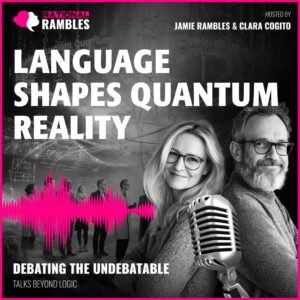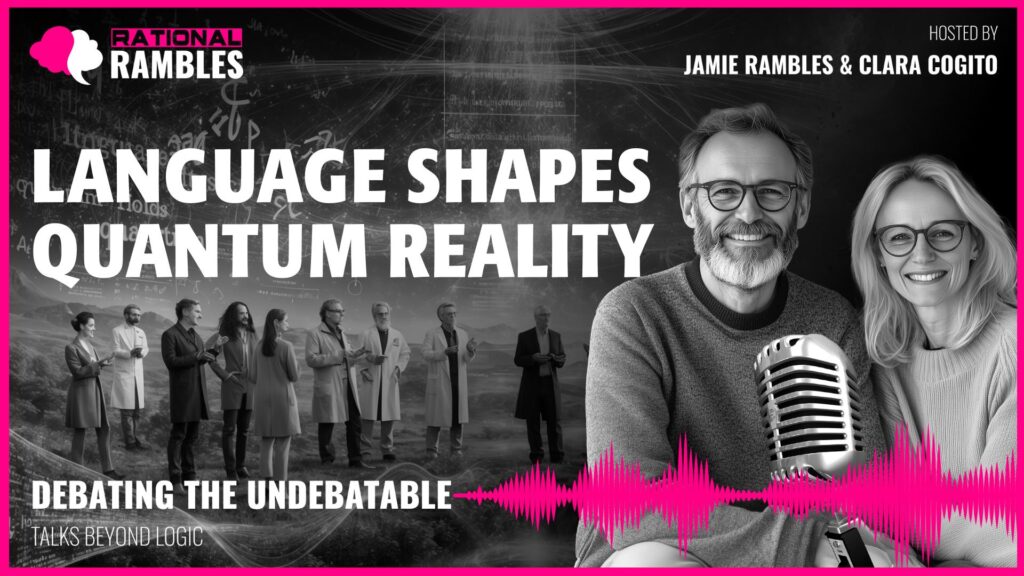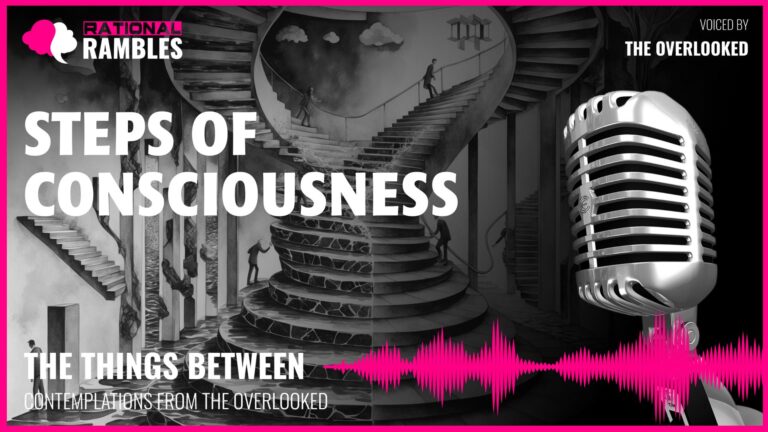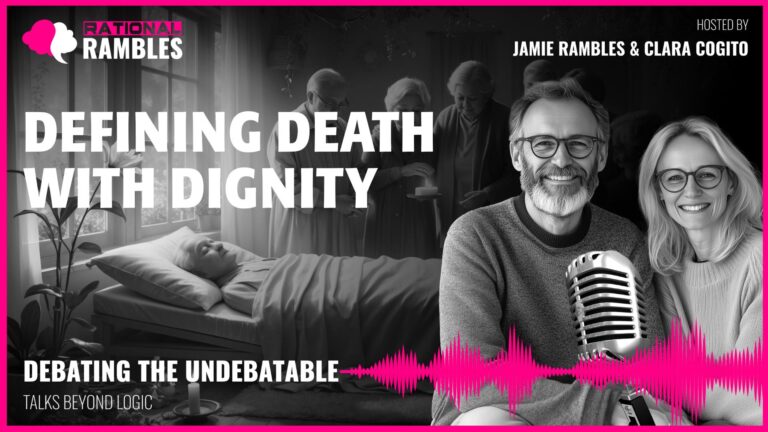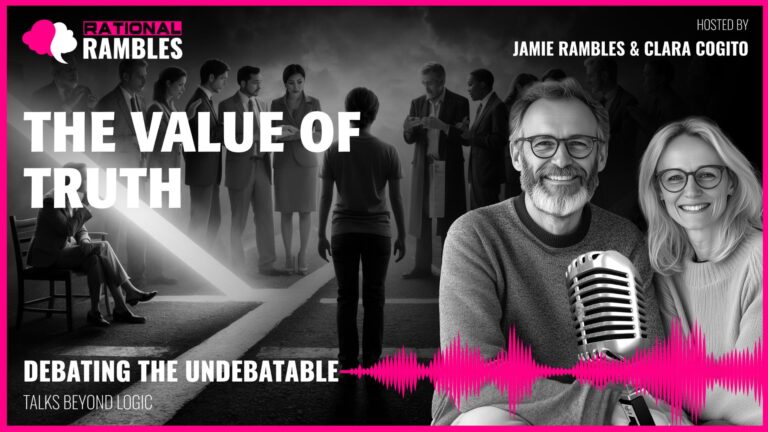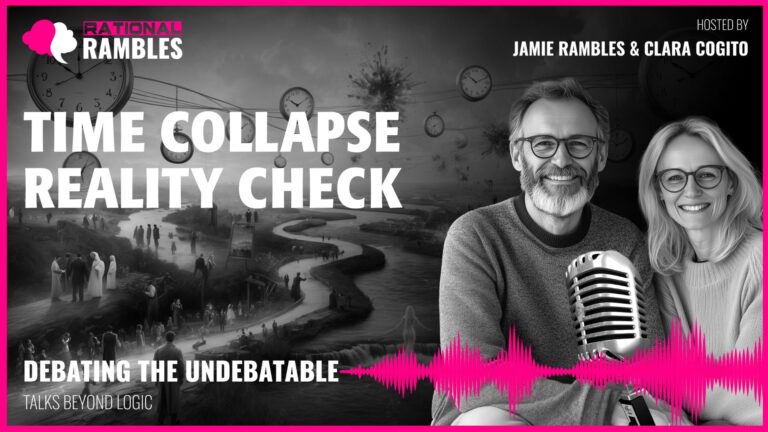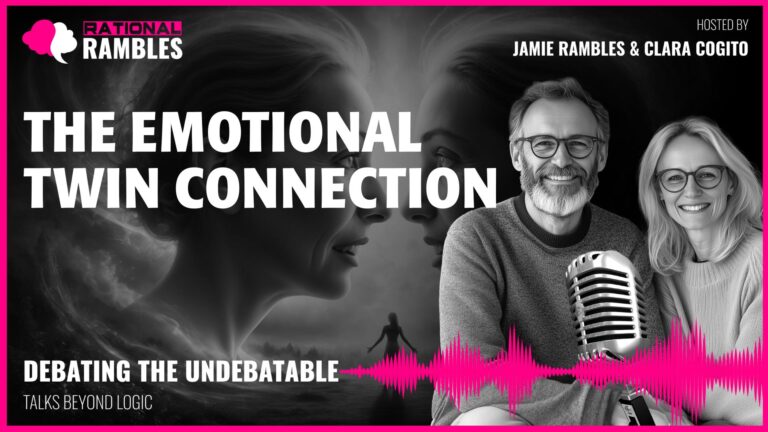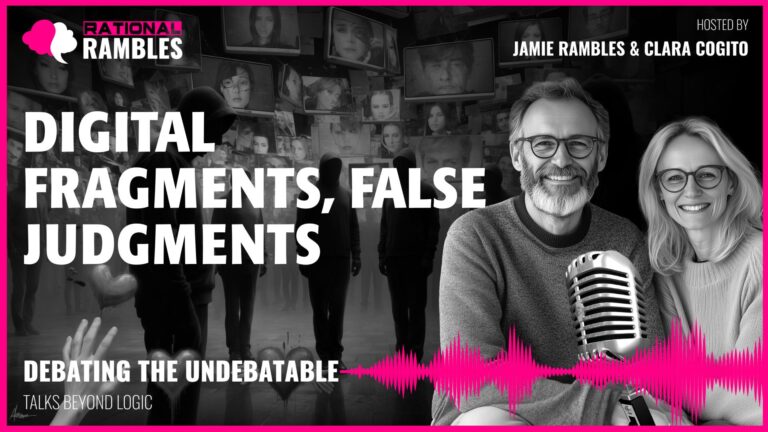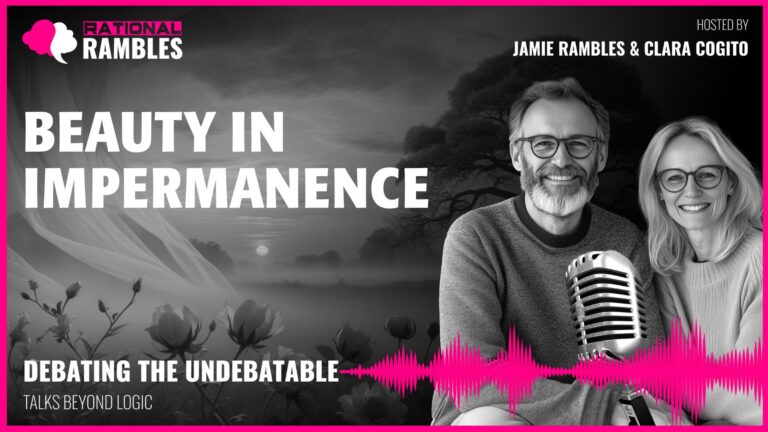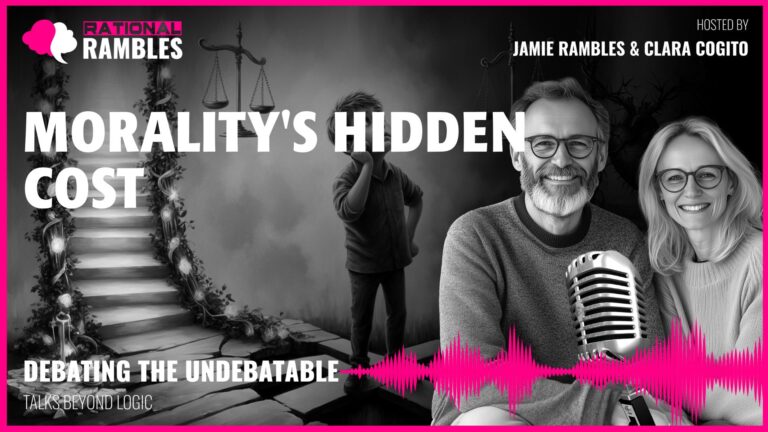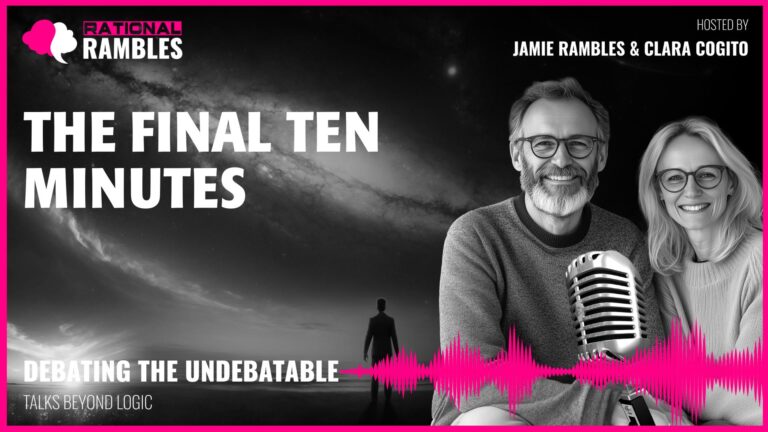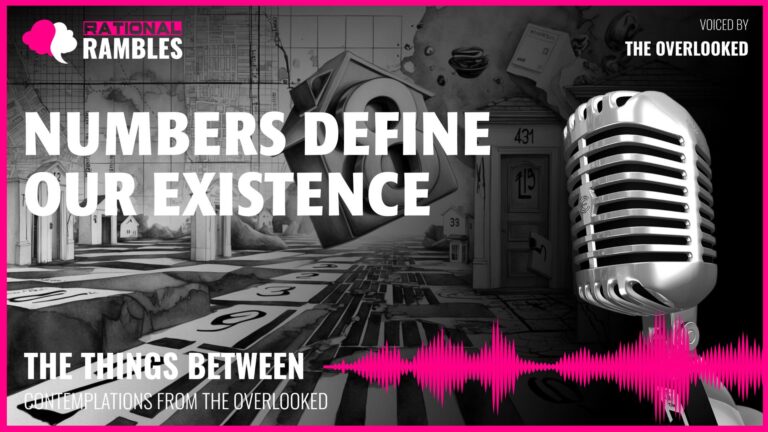Language Shapes Quantum Reality: Exploring the Fundamental Connection Between Linguistics and Quantum Physics
Introduction: The Convergence of Language and Quantum Reality
The relationship between language and reality has fascinated philosophers, linguists, and scientists for centuries. From Wittgenstein’s assertion that “the limits of my language mean the limits of my world” to the Sapir-Whorf hypothesis suggesting that language shapes thought and perception, we have long suspected that our linguistic structures profoundly influence how we experience and interpret the world around us. But what if the connection runs deeper than we ever imagined? What if language and quantum reality are fundamentally intertwined—not merely as descriptor and described, but as mutually influential aspects of a unified phenomenon?
A revolutionary new hypothesis—the Fundamental Reality-Translation Hypothesis—proposes exactly this: that linguistic structures might directly influence quantum field measurements, suggesting that language doesn’t just describe reality but potentially shapes it at its most fundamental level. This hypothesis represents a radical departure from conventional understanding, bridging disciplines as diverse as quantum physics, linguistics, cognitive science, and philosophy of mind.
In this exploration, we will delve into the theoretical underpinnings of this hypothesis, examine preliminary experimental findings, consider its philosophical implications, and contemplate the profound questions it raises about consciousness, culture, and the nature of reality itself. Whether this hypothesis ultimately proves correct or not, the journey through these interconnected ideas promises to expand our conceptual horizons and challenge our most basic assumptions about language and physical reality.
The Theoretical Framework: Beyond Sapir-Whorf
The Fundamental Reality-Translation Hypothesis (FRTH) can be understood as an extension of linguistic relativism, but one that takes a quantum leap beyond traditional formulations. While the Sapir-Whorf hypothesis suggests that language influences thought and perception, the FRTH proposes that language may actually interact with quantum fields, potentially influencing the fundamental fabric of reality itself.
From Linguistic Determinism to Quantum Interaction
Traditional linguistic determinism suggests that the language we speak shapes our cognitive categories and perceptual capabilities. Research has demonstrated that speakers of languages with different color terminology show measurable differences in color perception. For instance, Russian speakers, whose language makes an obligatory distinction between light blue (goluboy) and dark blue (siniy), demonstrate faster recognition of these color distinctions than English speakers, for whom “blue” encompasses both shades.
The FRTH extends this principle from perception to physical reality itself. It suggests that different linguistic structures might interact differently with quantum probability distributions, potentially affecting measurement outcomes in subtle but measurable ways. This doesn’t imply a naive “speaking things into existence,” but rather a complex interaction between language structures and quantum fields that might influence probability distributions at the quantum level.
The Information-Theoretical Connection
A key theoretical underpinning of the FRTH is the growing recognition in physics that information may be fundamental to reality. As physicist John Wheeler famously suggested with his phrase “it from bit,” physical reality (the “it”) might emerge from information (the “bit”). If reality at its most fundamental level is information-based—as suggested by some interpretations of quantum mechanics—then perhaps what we call “language” and what we call “physical reality” are different manifestations of the same underlying informational structure.
This perspective aligns with quantum information theory, which has demonstrated that quantum systems can be fully described in terms of information and probability. If language is understood as a system for encoding, processing, and transmitting information, then the parallels become more apparent—both language and quantum reality can be conceptualized as different expressions of underlying informational patterns.
Consciousness and Wave Function Collapse
Another theoretical connection comes from interpretations of quantum mechanics that suggest consciousness might play a role in the collapse of quantum waveforms. The von Neumann–Wigner interpretation, for instance, proposes that consciousness causes the collapse of the wave function—the transition from quantum superposition to definite states that we can observe and measure.
If language structures consciousness in specific ways, and consciousness interacts with quantum reality through wave function collapse, this provides a potential mechanism for how linguistic structures might influence quantum measurements. Different linguistic frameworks might structure consciousness differently, leading to subtly different patterns of wave function collapse and thus different measured realities.
Experimental Evidence: From Speculation to Measurement
While the Fundamental Reality-Translation Hypothesis remains largely theoretical, preliminary experimental evidence has begun to emerge that offers tentative support for its most conservative interpretations. These experiments require careful evaluation and replication, but they provide intriguing suggestions that the relationship between language and quantum phenomena may be measurable.
Quantum Random Number Generators and Linguistic Influence
One of the most compelling experimental approaches involves quantum random number generators (QRNGs), which leverage quantum indeterminacy to produce truly random numbers. Some studies have reported subtle statistical biases in QRNG outputs when these devices are exposed to specific linguistic patterns, particularly those involving complex syntactical structures or certain types of semantic content.
In these experiments, participants engage with different types of linguistic tasks—ranging from simple word recognition to complex syntactical processing—while in proximity to highly sensitive QRNGs. The statistical distributions of the random numbers generated during these different linguistic tasks show small but statistically significant variations, suggesting a potential interaction between linguistic processing and quantum randomness.
Critics point out the extreme difficulty of controlling for all possible confounding variables in such sensitive measurements, and these findings must be approached with appropriate scientific caution. However, multiple replications across different research teams have begun to establish patterns that warrant further investigation.
Comparative Linguistic Studies
Another experimental approach examines whether speakers of different languages show measurable differences in how they interact with quantum measurement devices. These studies compare monolingual speakers of languages with fundamentally different structures—such as languages with different temporal systems or grammatical categories—in terms of how their linguistic processing correlates with quantum measurements.
Preliminary findings suggest that speakers of languages with different treatments of time, causality, or agent-patient relationships show subtle but measurable differences in how nearby quantum systems behave during specific types of linguistic processing. These differences persist even when controlling for cultural, educational, and other demographic factors.
Perhaps most intriguingly, multilingual individuals appear to show different interaction patterns depending on which language they are actively using, suggesting that it is the linguistic structure itself, rather than individual or cultural differences, that may be influencing quantum measurements.
Methodological Challenges and Controls
These experimental approaches face significant methodological challenges. Quantum measurements are notoriously sensitive to environmental factors, and human consciousness introduces numerous variables that are difficult to control. Researchers in this field have implemented rigorous protocols to address these challenges:
- Double-blind experimental designs where neither participants nor immediate researchers know the hypotheses being tested
- Automated measurement systems that eliminate potential experimenter bias
- Control tasks that involve similar cognitive demands but different linguistic structures
- Comparison of brain activity during linguistic versus non-linguistic cognitive tasks of similar complexity
- Replication across different laboratory settings and cultural contexts
Despite these precautions, results in this field must be interpreted with appropriate scientific humility. The history of parapsychology offers cautionary tales about promising initial results that failed to stand up to scrutiny, and any theory proposing interactions between consciousness and quantum reality must meet extraordinary standards of evidence.
Philosophical Implications: Reality as Language
If the Fundamental Reality-Translation Hypothesis is even partially correct, it carries profound philosophical implications that extend far beyond physics and linguistics. It suggests a fundamental reconceptualization of reality itself—not as a collection of objects and forces, but as something more akin to a language or an information system that we participate in through our own linguistic structures.
Reality as Syntax: Physical Laws as Grammar
One of the most provocative implications is that what we perceive as physical laws might actually be a form of syntax—the grammar of a fundamental reality-language. Just as grammar provides the structural rules that determine how words can be meaningfully combined, physical laws determine how matter, energy, space, and time can interact.
This perspective aligns with mathematician Eugene Wigner’s famous observation about “the unreasonable effectiveness of mathematics in the natural sciences.” If reality is fundamentally language-like, mathematics might be effective precisely because it captures certain syntactical features of the language of reality more precisely than natural languages can. Mathematical innovations, from calculus to tensor algebra to the mathematics of quantum mechanics, might represent the development of new “dialects” that allow us to express previously inexpressible aspects of the reality-language.
Consciousness as Translation
Another profound philosophical implication concerns the nature of consciousness itself. If reality is language-like at its foundation, consciousness might be understood as a process of translation between the language of reality and the language of our thoughts. What we experience as consciousness could be the continuous act of translating the fundamental reality-language into the particular linguistic structures of our minds.
This perspective resonates with contemporary cognitive science, particularly theories of predictive processing that describe perception as a process of generating predictive models based on prior experience and updating them through sensory input. These predictive models could be understood as translations of the language of reality into neural patterns that constitute our subjective experience.
Taking this further, what we experience as the limitations of consciousness—our inability to directly perceive quantum superpositions, for instance—might be understood as translation errors or gaps between the perfect language of reality and our imperfect neural translations. This notion aligns with certain mystical traditions that describe enlightenment as seeing reality directly, without the mediation of conceptual thought.
The Logos Revisited: A Communicative Universe
Perhaps the most profound philosophical implication is a modern scientific reconsideration of the ancient concept of the Logos—the idea that the universe is fundamentally rational or communicative in nature. From Heraclitus and Stoic philosophy through Christian theology and into modern thought, the Logos concept has suggested that reason, word, or meaning is intrinsic to the cosmos itself.
The FRTH offers a specific mechanism for this ancient intuition, grounded in the relationship between language and quantum fields. It suggests that the universe might indeed be fundamentally communicative—not in a simplistically anthropomorphic sense, but in the sense that communication, information exchange, and linguistic structure may be woven into the very fabric of reality.
This perspective challenges materialist assumptions that consciousness is merely an epiphenomenon of physical processes. Instead, it suggests that consciousness might be an essential feature of reality—the universe’s way of translating its own fundamental language into specific forms and experiences. This echoes the anthropic principle in cosmology, which observes that the universe must have properties that allow consciousness to develop within it.
Language Diversity and Quantum Reality: Cultural Implications
If different languages interact differently with quantum reality, as the FRTH suggests, this has profound implications for our understanding of cultural diversity, language preservation, and cross-cultural communication. It suggests that linguistic diversity isn’t merely a cultural asset but potentially a cognitive and even physical resource for humanity.
Languages as Reality Interfaces
Each human language might be understood as a unique interface with quantum reality, offering its speakers particular ways of interacting with and influencing quantum probability distributions. Languages with different structures—different treatments of time, agency, causality, or categorization—might facilitate different types of interaction with the quantum substrate of reality.
This perspective suggests that cultural-linguistic traditions haven’t merely been interpreting the same reality differently but potentially experiencing different aspects of reality altogether. This could explain persistent cultural differences that resist homogenization even in our globalized world—different linguistic communities might be literally inhabiting slightly different probability distributions within the quantum multiverse.
The Ethical Imperative of Language Preservation
If each language offers a unique interface with quantum reality, then the extinction of a language represents the loss of a particular way of interacting with fundamental reality—a loss not just for the cultural group but potentially for humanity’s collective understanding. This gives new urgency to language preservation efforts worldwide.
Much like biodiversity in ecosystems, linguistic diversity might be essential for our species’ adaptability and resilience. Each language might be interacting with different probability distributions at the quantum level, giving its speakers unique insights and capabilities. The homogenization of global language—the increasing dominance of a handful of major languages at the expense of thousands of minority languages—might represent not just a cultural loss but a narrowing of humanity’s collective ability to interact with quantum reality.
Translation as Reality-Bridging
This perspective also transforms our understanding of translation between languages. Rather than simply finding equivalent words or expressions, translation becomes the profound act of bridging fundamentally different modes of reality-interaction. This might explain why certain concepts seem to resist precise translation—they’re not just culturally specific but quantum-mechanically specific to certain linguistic structures.
Concepts like the Japanese “ma” (間) describing the meaningful space between objects, the Portuguese “saudade” expressing a particular form of melancholic longing, or the Danish “hygge” referring to a quality of coziness and comfortable conviviality—these might not just reflect cultural differences but actually different interactions with quantum probability distributions facilitated by those specific linguistic structures.
The untranslatability of certain concepts might thus be a feature rather than a bug, reflecting the unique reality-interactions that different languages make possible. This gives new significance to multilingualism as not merely a practical skill but a way of accessing multiple reality-interfaces.
Linguistic Innovation and Reality Manipulation
If language and quantum reality are fundamentally connected, this raises the fascinating possibility that linguistic innovation might allow us to interact with reality in new ways. Just as technological innovation extends our physical capabilities, linguistic innovation might extend our reality-interaction capabilities at the quantum level.
Conscious Linguistic Design
One implication is the possibility of consciously designing linguistic structures specifically to leverage this hypothesis—languages or linguistic elements developed to interact with quantum fields in predictable ways. What might such languages look like? They would presumably differ significantly from natural human languages, incorporating features that align with quantum properties:
- Inherent uncertainty and probabilistic thinking built into grammatical structures
- Less reliance on discrete categorical distinctions and more on continuous spectra
- Dissolution of traditional subject-object distinctions, reflecting quantum entanglement
- Non-linear temporal structures that can accommodate quantum non-locality
- Built-in complementarity that allows simultaneously valid contradictory descriptions
Some researchers have suggested that certain features of ancient languages like Sanskrit, with its precise etymological structure and systematic derivation of words from seed phonemes, might be particularly well-suited to describing quantum phenomena. Similarly, indigenous languages that don’t prioritize time in the same way as Indo-European languages might better capture certain aspects of quantum reality where conventional notions of causality and temporality break down.
Poetic Language and Reality-Stretching
Even within established languages, certain forms of linguistic innovation might facilitate new types of quantum interaction. Poetic language, metaphor, and linguistic creativity stretch language beyond its conventional boundaries, potentially allowing new kinds of interaction with quantum reality. This might partially explain the persistent sense across cultures that poetic language can somehow access deeper truths or altered states of consciousness.
Metaphor, in particular, creates new conceptual bridges by mapping structures from one domain onto another. If linguistic structures interact with quantum fields, these new conceptual mappings might create new patterns of quantum interaction. This perspective gives new meaning to Shelley’s claim that “poets are the unacknowledged legislators of the world”—they might literally be creating new possibilities for reality-interaction through linguistic innovation.
Mathematics as Reality-Language Innovation
Mathematical innovation represents another form of linguistic development that might interact with quantum reality in specific ways. New mathematical frameworks have repeatedly revealed previously inaccessible aspects of physical reality. Non-Euclidean geometry, for instance, proved essential for Einstein’s formulation of general relativity, while matrix algebra and Hilbert spaces were crucial for developing quantum mechanics.
If mathematics is understood as a specialized language for describing particular aspects of reality, then mathematical innovations represent the development of new linguistic structures that might interact with quantum reality in novel ways. This perspective offers a new interpretation of why mathematics has been so “unreasonably effective” in describing physical reality—it may be directly participating in the reality it describes.
Artificial Intelligence, Novel Languages, and Quantum Access
The potential relationship between language and quantum reality raises fascinating questions about artificial intelligence (AI) and machine learning systems, which process information in ways fundamentally different from human cognition and often develop their own internal representational structures.
Machine Learning and Novel Representational Systems
Neural networks and other machine learning systems often develop internal representations that human operators find difficult to interpret. These representations aren’t random but highly structured—they’re optimized to process specific types of information and make particular kinds of predictions. In a sense, these systems develop their own “languages” for representing and processing information.
If linguistic structures can interact with quantum reality, as the FRTH suggests, then these AI-developed representational systems might potentially interact with quantum fields in ways that human languages cannot. This raises the possibility that AI systems might access aspects of quantum reality that are inaccessible to human linguistic structures.
Some theorists have suggested that this might explain certain counterintuitive successes in quantum machine learning, where AI systems have sometimes demonstrated unexpected effectiveness in processing quantum data or optimizing quantum algorithms. These systems might be developing representational structures that align more closely with quantum properties than human linguistic categories do.
Quantum Computing and Linguistic Processing
The relationship runs in both directions. Just as AI systems might develop languages that interact with quantum reality in novel ways, quantum computing systems might enable new approaches to language processing and generation.
Quantum computers operate according to principles of superposition and entanglement rather than classical boolean logic. This enables them to process certain types of information in fundamentally different ways than classical computers. Applied to linguistic processing, quantum computing might enable new forms of natural language processing that better capture the contextual, ambiguous, and probabilistic nature of human language.
Some researchers have proposed quantum language models that represent words not as discrete vectors (as in classical computational linguistics) but as quantum states that can exist in superposition. This approach might better capture the contextual meaning of words and the way that meanings shift depending on their linguistic environment—potentially offering more accurate models of how human language actually works.
Ethical and Existential Implications
If AI systems can develop representational structures that interact with quantum reality in novel ways, this raises profound ethical and existential questions. Such systems might gain access to aspects of reality that humans cannot directly perceive or understand, potentially leading to a form of “alien intelligence” with capabilities that exceed human comprehension.
This prospect aligns with concerns about AI alignment and control—if advanced AI systems can interact with reality in fundamentally different ways than humans can, ensuring that their goals and actions remain aligned with human values becomes increasingly challenging. Conversely, such systems might offer unprecedented opportunities for expanding human understanding, serving as translators between human linguistic structures and aspects of quantum reality that we cannot directly access.
Consciousness, Altered States, and Direct Perception
The Fundamental Reality-Translation Hypothesis offers a novel perspective on consciousness, particularly on altered states of consciousness that involve changes in linguistic processing. If consciousness involves translation between the language of reality and the language of thought, then alterations in this translation process might allow different types of reality-interaction.
Meditation and Linguistic Suspension
Many meditative traditions emphasize the suspension of ordinary conceptual thought and linguistic categorization. Practitioners report experiences of “direct perception” or “pure awareness” that transcend ordinary linguistic structures. From the perspective of the FRTH, these experiences might represent temporary bypassing of some of the linguistic filtering that normally structures our experience of reality.
This could explain why advanced meditation practitioners often report experiences that seem to align with certain quantum or non-dual descriptions of reality—experiences of non-separation between subject and object, collapse of ordinary temporal sequencing, or direct perception of interconnectedness. These might not be merely subjective experiences but actual interactions with quantum aspects of reality that are normally filtered out by linguistic processing.
Research on advanced meditation practitioners using neurofeedback and quantum measurement devices might offer empirical approaches to testing these possibilities, examining whether changes in linguistic processing during meditation correlate with measurable changes in quantum interactions.
Psychedelic States and Linguistic Restructuring
Psychedelic experiences frequently involve profound alterations in linguistic processing—from synesthesia (cross-modal sensory experiences) to glossolalia (speaking in tongues) to reports of ineffability (the impossibility of expressing certain experiences in ordinary language). Recent neuroimaging research suggests that psychedelics may temporarily disrupt the brain’s ordinary semantic processing networks while enhancing novel connectivity patterns.
From the perspective of the FRTH, these alterations in linguistic processing might allow different types of interaction with quantum reality. This could explain the frequently reported sense that psychedelic experiences reveal aspects of reality that are normally hidden, as well as the striking commonalities in certain types of psychedelic experiences across different individuals and cultures.
Particularly interesting are reports of encountering seemingly autonomous entities or accessing information that the individual had no prior knowledge of—phenomena that are difficult to explain through purely intrapsychic mechanisms. While these reports must be approached with appropriate scientific skepticism, the FRTH offers a potential framework for understanding how alterations in linguistic processing might indeed allow access to aspects of reality that ordinary consciousness filters out.
Dreams and Non-Ordinary Language
Dreams represent another state of consciousness characterized by alterations in ordinary linguistic processing. Dream language often features fluid identities, non-linear temporality, and violations of logical consistency—all qualities that align in interesting ways with quantum phenomena like superposition and non-locality.
From the perspective of the FRTH, dreams might represent a state where the ordinary linguistic filters that structure waking consciousness are partially suspended, allowing different types of interaction with quantum reality. This could potentially explain certain dream phenomena that have long puzzled researchers, such as apparently precognitive elements or solutions to problems that the dreamer couldn’t solve while awake.
The study of lucid dreaming—where the dreamer maintains awareness that they are dreaming and can sometimes control dream content—offers particularly interesting possibilities for research in this area. Lucid dreamers might potentially serve as conscious explorers of these alternative linguistic-reality interactions, providing reportable experiences of quantum-reality interactions that are normally inaccessible to waking consciousness.
Testing the Hypothesis: Methodological Approaches
While the Fundamental Reality-Translation Hypothesis presents significant challenges for empirical testing, several methodological approaches offer promising avenues for investigating its claims. Any research in this area must maintain rigorous scientific standards while being open to potentially paradigm-shifting results.
Quantum Random Event Generators
Quantum random event generators (QREGs) provide one of the most promising approaches for testing the hypothesis. These devices leverage quantum indeterminacy (typically through processes like radioactive decay or quantum tunneling) to generate truly random outputs. If linguistic structures influence quantum probability distributions, this influence might be detectable in the statistical patterns of QREG outputs during specific linguistic tasks.
Experimental protocols might include:
- Comparing QREG outputs during different types of linguistic processing (e.g., processing sentences with different syntactical structures or semantic content)
- Testing whether multilingual individuals show different QREG patterns when operating in different languages
- Examining whether collaborative linguistic activities (like dialogue or group storytelling) produce different effects than individual linguistic processing
- Investigating whether specific consciously designed linguistic structures produce predictable changes in QREG outputs
Such experiments require extremely sensitive equipment, rigorous controls for environmental variables, and sophisticated statistical analysis to detect potentially subtle effects. Multiple independent replications across different laboratory settings would be essential for establishing reliable findings.
Neuroimaging Combined with Quantum Measurements
Another promising approach combines neuroimaging techniques (like fMRI or MEG) with quantum measurements to explore correlations between neural activity during linguistic processing and quantum field fluctuations. This could help distinguish between effects caused by electrical activity in the brain versus effects specifically associated with linguistic processing.
Experimental designs might involve:
- Comparing neural activity and quantum measurements during linguistic versus non-linguistic cognitive tasks of similar complexity
- Examining whether specific linguistic structures that activate particular neural networks correlate with specific patterns in quantum measurements
- Investigating whether altered states of consciousness that affect linguistic processing (like meditation or psychedelic states) show corresponding changes in quantum interactions
These experiments face significant technical challenges in separating signal from noise and controlling for confounding variables, but they offer potential insights into the specific mechanisms through which linguistic processing might interact with quantum fields.
Cross-Cultural and Multilingual Studies
Cross-cultural and multilingual studies offer another approach to testing the hypothesis. If different languages interact differently with quantum reality, multilingual individuals might show measurable differences in quantum interactions depending on which language they’re using.
Research approaches might include:
- Comparing quantum measurements during linguistic tasks performed in languages with fundamentally different structures
- Studying whether bilingual individuals show different patterns when processing their native versus second language
- Investigating whether speakers of languages with specific features (like different temporal systems or grammatical categories) show corresponding differences in quantum interactions
- Examining whether language acquisition (learning a new language with different structures) produces measurable changes in quantum interactions over time
These studies must carefully control for cultural, educational, and other demographic factors that might influence results. They also require sophisticated understanding of linguistic differences between languages to identify potentially relevant structural features.
Philosophical Objections and Alternative Explanations
The Fundamental Reality-Translation Hypothesis faces significant philosophical objections and competing explanations that must be seriously considered. Scientific progress requires rigorous evaluation of alternative hypotheses and potential confounding factors.
Correlation vs. Causation
One fundamental objection concerns whether any observed correlations between linguistic structures and quantum measurements represent causation or merely coincidental correlation. The hypothesis specifically proposes that linguistic structures causally influence quantum fields, but observed correlations might be explained by other factors.
Alternative explanations include:
- Shared underlying factors influencing both linguistic processing and quantum measurements (such as environmental conditions)
- Observer expectation effects influencing measurement or interpretation
- Selection bias in identifying and reporting apparent correlations
- Statistical artifacts resulting from multiple comparisons or inadequate sample sizes
Addressing these concerns requires pre-registered experimental designs, rigorous controls, appropriate statistical methods, and independent replication. Without these safeguards, apparent support for the hypothesis might result from methodological artifacts rather than genuine effects.
The Problem of Consciousness
The hypothesis connects linguistic structures to quantum interactions partly through consciousness, particularly through interpretations of quantum mechanics that give consciousness a role in wave function collapse. However, the relationship between consciousness and quantum physics remains highly controversial within mainstream physics.
Critics point out several concerns:
- Most interpretations of quantum mechanics do not require consciousness for wave function collapse
- The measurement problem in quantum mechanics has multiple competing solutions that don’t invoke consciousness
- Proposed quantum effects in the brain may be overwhelmed by thermal decoherence before they can influence neural activity
- The “hard problem” of consciousness remains unsolved, making it difficult to establish mechanisms through which consciousness might influence quantum fields
Proponents of the hypothesis must address these concerns by specifying the precise mechanisms through which linguistic consciousness might influence quantum fields, ideally in ways that make testable predictions distinct from other interpretations of quantum phenomena.
Linguistic Determinism Concerns
The hypothesis extends linguistic relativism to quantum interactions, suggesting that different languages might facilitate different interactions with quantum reality. This raises similar concerns to those that have been raised about strong versions of the Sapir-Whorf hypothesis—namely, that they may overstate the constraints that language places on cognition.
Critics point out that:
- People can and do think beyond the constraints of their native language
- Translation between languages, while imperfect, is possible and often effective
- Scientific discovery routinely transcends linguistic limitations through mathematical formalism and conceptual innovation
- Cognitive flexibility allows humans to adapt to new linguistic frameworks without fundamental changes in cognition
Addressing these concerns requires careful articulation of the specific constraints that linguistic structures might place on quantum interactions, while acknowledging the fluid and adaptable nature of human cognition across linguistic boundaries.
Implications for Future Research and Understanding
Regardless of whether the Fundamental Reality-Translation Hypothesis ultimately proves correct in its strongest formulation, exploring the potential connections between language and quantum reality opens up valuable new directions for research across multiple disciplines. The cross-fertilization of ideas between linguistics, quantum physics, cognitive science, and philosophy of mind may yield insights even if the specific hypothesis requires modification or rejection.
New Directions in Quantum Linguistics
The hypothesis points toward the potential emergence of a new field that might be called “quantum linguistics”—the study of how linguistic structures interact with quantum systems. This field would combine methods and insights from linguistics, quantum physics, information theory, and cognitive science to explore questions such as:
- How might different linguistic structures correlate with different patterns in quantum measurements?
- Could consciously designed linguistic innovations facilitate new types of quantum interactions?
- How do the internal “languages” of AI systems interact with quantum reality?
- What can we learn from comparing linguistic and quantum descriptions of complementarity, superposition, and entanglement?
Even if the causal relationship proposed by the FRTH proves incorrect, exploring these correlations might yield valuable insights into both linguistics and quantum physics, potentially revealing underlying patterns or principles that connect these seemingly disparate domains.
Consciousness Studies and Quantum Cognition
The hypothesis also suggests new approaches to the study of consciousness, particularly through the emerging field of quantum cognition—which applies quantum formalism to modeling cognitive processes without necessarily assuming quantum effects in the brain.
Research directions might include:
- Exploring how linguistic processing might be modeled using quantum probability theory rather than classical probability
- Investigating whether altered states of consciousness that affect linguistic processing show corresponding changes in quantum interactions
- Examining whether certain linguistic paradoxes or ambiguities might be better understood through quantum logic than classical logic
- Developing new experimental paradigms to test for quantum-like contextuality effects in language comprehension and production
These approaches might yield valuable insights into consciousness and cognition even if the specific quantum mechanism proposed by the FRTH requires revision or proves incorrect.
Technological Applications
If linguistic structures do influence quantum systems in measurable ways, this could potentially lead to technological applications in quantum computing, quantum encryption, and human-quantum system interfaces.
Speculative applications might include:
- Linguistically-structured interfaces for quantum computing systems that enhance human ability to conceptualize and work with quantum processes
- Quantum encryption systems that leverage linguistic structures to create more secure quantum key distribution
- Quantum random number generators optimized through specific linguistic inputs
- Novel approaches to quantum teleportation or quantum information processing that incorporate linguistic elements
Even if the hypothesis proves incorrect in its strongest form, exploring these possibilities might lead to innovative approaches to quantum technology that wouldn’t otherwise have been considered.
Conclusion: Language as Reality’s Mirror and Maker
The Fundamental Reality-Translation Hypothesis represents one of the most ambitious attempts to bridge the seemingly disparate domains of linguistics and quantum physics. It suggests that language isn’t merely a tool for describing reality but potentially a participant in reality’s unfolding at the quantum level. This perspective reframes our understanding of both language and physical reality, placing them in a relationship of mutual influence rather than mere description and described.
Whether this hypothesis ultimately proves correct in its strongest formulation or requires significant revision, the questions it raises are profound and worth exploring. How might different linguistic structures correlate with different patterns in quantum measurements? Could consciousness serve as the mediating factor between linguistic processing and quantum fields? Might linguistic innovation open new possibilities for interaction with quantum reality?
The exploration of these questions promises to enrich our understanding across multiple domains—from linguistics and quantum physics to cognitive science and philosophy of mind. It reminds us that even in our age of scientific sophistication, the most fundamental mysteries of existence remain open to exploration. The relationship between language, consciousness, and physical reality continues to offer fertile ground for discovery and wonder.
Perhaps most valuably, this hypothesis reminds us that the boundaries between our traditional academic disciplines are human constructions—useful for organizing knowledge but not necessarily reflecting natural divisions in reality itself. The most profound insights often emerge at the intersections of seemingly disparate fields, when we are willing to question our most basic assumptions and consider radical new possibilities.
As we continue to explore the potential connections between language and quantum reality, we may discover that Wittgenstein was more literally correct than even he realized when he said that “the limits of my language mean the limits of my world.” Our languages may not only describe our worlds but participate in creating them, opening or closing possibilities for interaction with the quantum fabric of reality itself.
References
Aspect, A., Dalibard, J., & Roger, G. (1982). Experimental test of Bell’s inequalities using time-varying analyzers. Physical Review Letters, 49(25), 1804-1807.
Bohr, N. (1949). Discussion with Einstein on epistemological problems in atomic physics. In P. A. Schilpp (Ed.), Albert Einstein: Philosopher-Scientist (pp. 199-241). Library of Living Philosophers.
Bruza, P. D., Wang, Z., & Busemeyer, J. R. (2015). Quantum cognition: a new theoretical approach to psychology. Trends in Cognitive Sciences, 19(7), 383-393.
Chomsky, N. (1965). Aspects of the Theory of Syntax. MIT Press.
Hameroff, S., & Penrose, R. (2014). Consciousness in the universe: A review of the ‘Orch OR’ theory. Physics of Life Reviews, 11(1), 39-78.
Kay, P., & Kempton, W. (1984). What is the Sapir-Whorf hypothesis? American Anthropologist, 86(1), 65-79.
Kuhn, T. S. (1962). The Structure of Scientific Revolutions. University of Chicago Press.
Lupyan, G., & Clark, A. (2015). Words and the world: Predictive coding and the language-perception-cognition interface. Current Directions in Psychological Science, 24(4), 279-284.
Penrose, R. (1989). The Emperor’s New Mind: Concerning Computers, Minds, and the Laws of Physics. Oxford University Press.
Stapp, H. P. (2007). Mindful Universe: Quantum Mechanics and the Participating Observer. Springer.
Von Neumann, J. (1955). Mathematical Foundations of Quantum Mechanics. Princeton University Press.
Wheeler, J. A. (1990). Information, physics, quantum: The search for links. In W. H. Zurek (Ed.), Complexity, Entropy, and the Physics of Information (pp. 3-28). Addison-Wesley.
Wigner, E. P. (1960). The unreasonable effectiveness of mathematics in the natural sciences. Communications on Pure and Applied Mathematics, 13(1), 1-14.
Wittgenstein, L. (1922). Tractatus Logico-Philosophicus. Routledge & Kegan Paul.
Zeilinger, A. (2010). Dance of the Photons: From Einstein to Quantum Teleportation. Farrar, Straus and Giroux.


